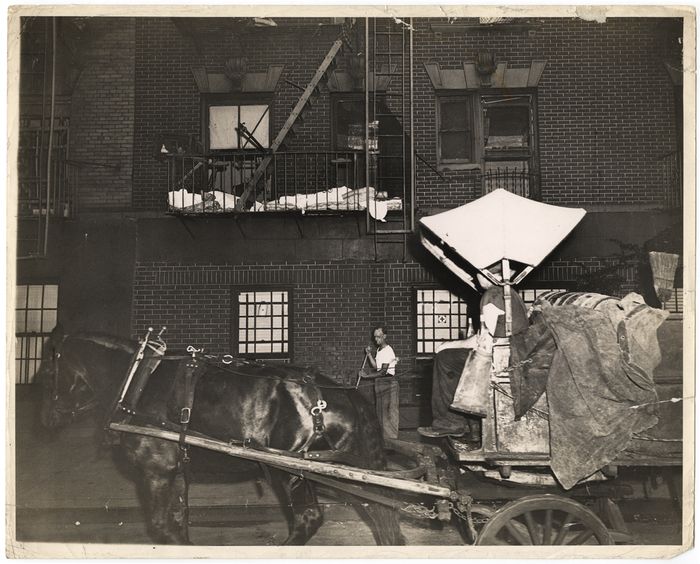Night Comes in Through the Window

It is the time of sleeping with windows open. Your screen is a fluttering membrane onto the darkness. Night scratches its fur against the thin separator, seeping into your room through osmosis. It is neither too hot, nor too cold, although the temperature teeters between the two, and between midnight and 4am you will both kick off the strangling covers and pull them back up when you feel a chill. You’ve put away the comforter, but haven’t yet cranked up the AC.
If it rains, all the better. Perhaps there is a slight dampness at the windowsill, but dare the rusting arms of your fire escape for a moment before turning in. Inhale. For a few full lungs’ worth of air, release yourself from the city dweller’s inhibitions against deep breathing. Soak up the smell of iron oxide, the pockets of rain held in the leaves of the street trees, and the wet basement dirt of the construction site down the block.
When ozone was first discovered by 19th-century chemists, it was named after a Greek word meaning “to smell,” and was first thought to be the scent of electricity. Its three oxygen atoms, locked in an embrace, dawdle in the path of lightning. Its distinctive odor was referenced in the Iliad—the lingering trace of Zeus’s thunderbolts—but is also embedded in the comfortably quotidian smell of clean laundry. Massed in the stratosphere, it protects us from the sun’s harmful rays, but when bubbling up into the troposphere (the air that we ground-level humans breathe) it’s a dangerous pollutant, spewing from cars and power plants. Ozone Park in Queens owes its moniker to the word’s association with clean, bracing sea air.
Before the heat blooms in earnest, enjoy this time. Enjoy the ozone whiff of thunderstorms, or if the night is dry, perhaps revel in the smell of your neighbors’ backyard grill and the sound of their late evening laughter. Invite the night into your dreams.

- The soundscape of the city has changed over the years as cars replaced horses and window AC units added their drone. A virtual project by artist David Al-Ibrahim titled Calling Thunder recreates what 17th-century Manhattan might have sounded like before colonization, from Green Herons sounding at Inwood Hill Park to Bullfrogs singing at Collect Pond.
- Although the City That Never Sleeps tends to mostly tuck in as the night grows dark, other New Yorkers awake. New York State has nine different species of bats and many roost in the caves (or nest boxes that simulate them) and trees of Central Park as well as other greenspaces such as Green-Wood Cemetery. Look for them chasing insects just after dusk.
- New York isn't necessarily celebrated for its street smells (unless you are a rat who delights in the whiff of detritus), but it was once much worse. An 1870s “stench map” created by the New York City Metropolitan Board of Health plotted where industries including oil refining, slaughterhouses, phosphate works, fat renderers, and more were poisoning the air (at a time when miasmas, or bad smells, were thought to make people sick). As Tanvi Misra at CityLab pointed out, while the factories may be gone, superfund sites remain where they stood, showing how a health hazard can linger for generations long after its stench has faded.




